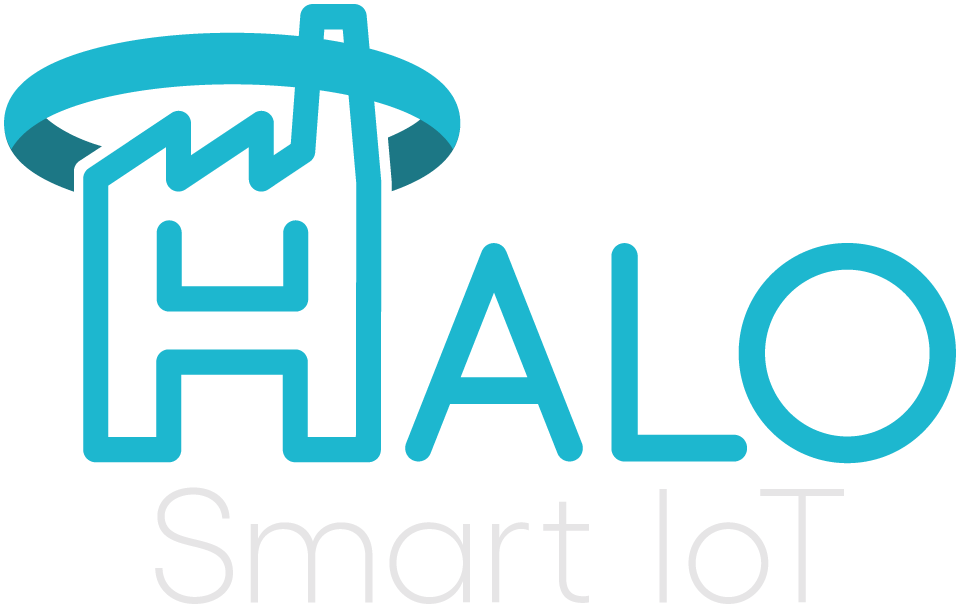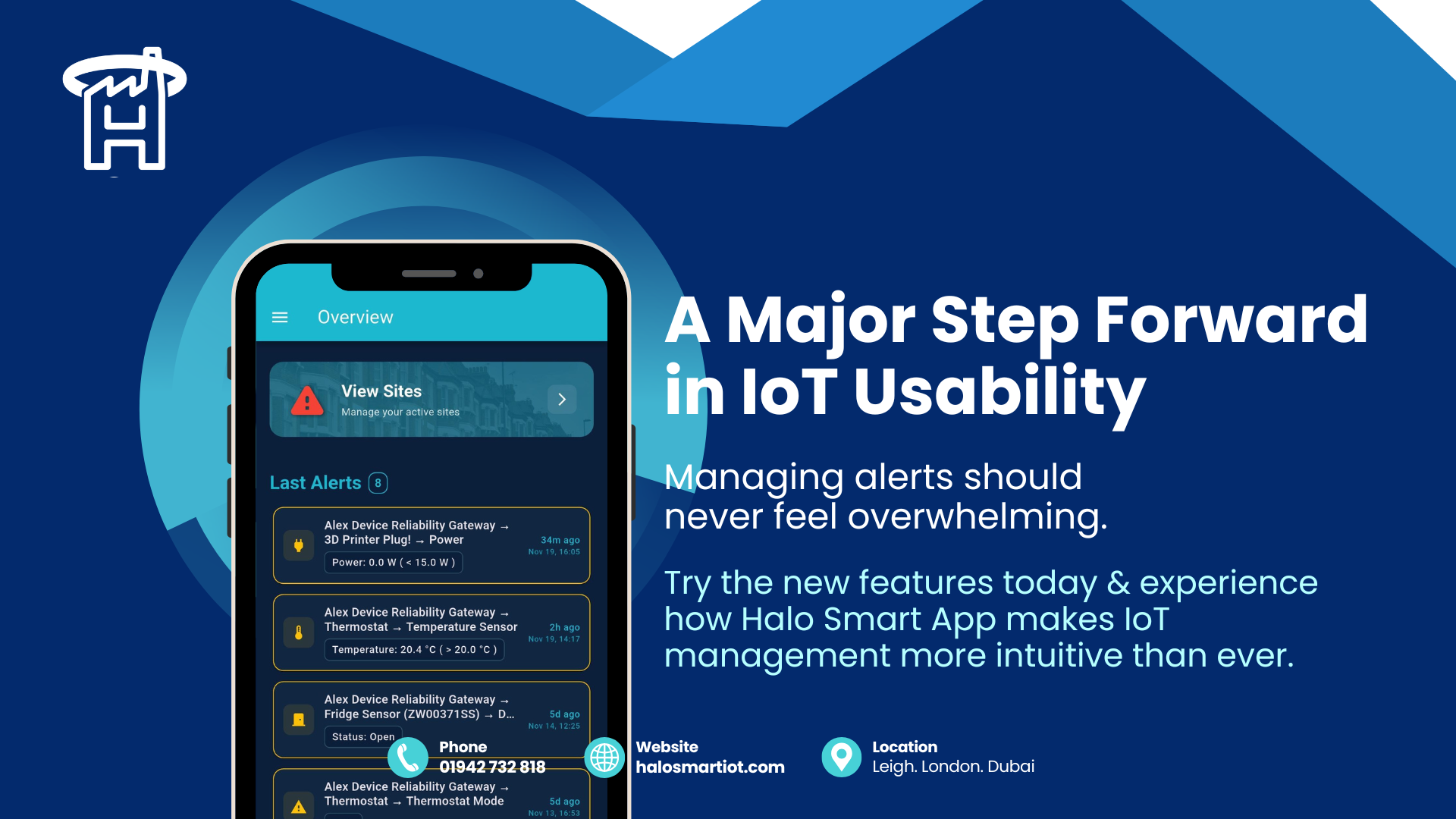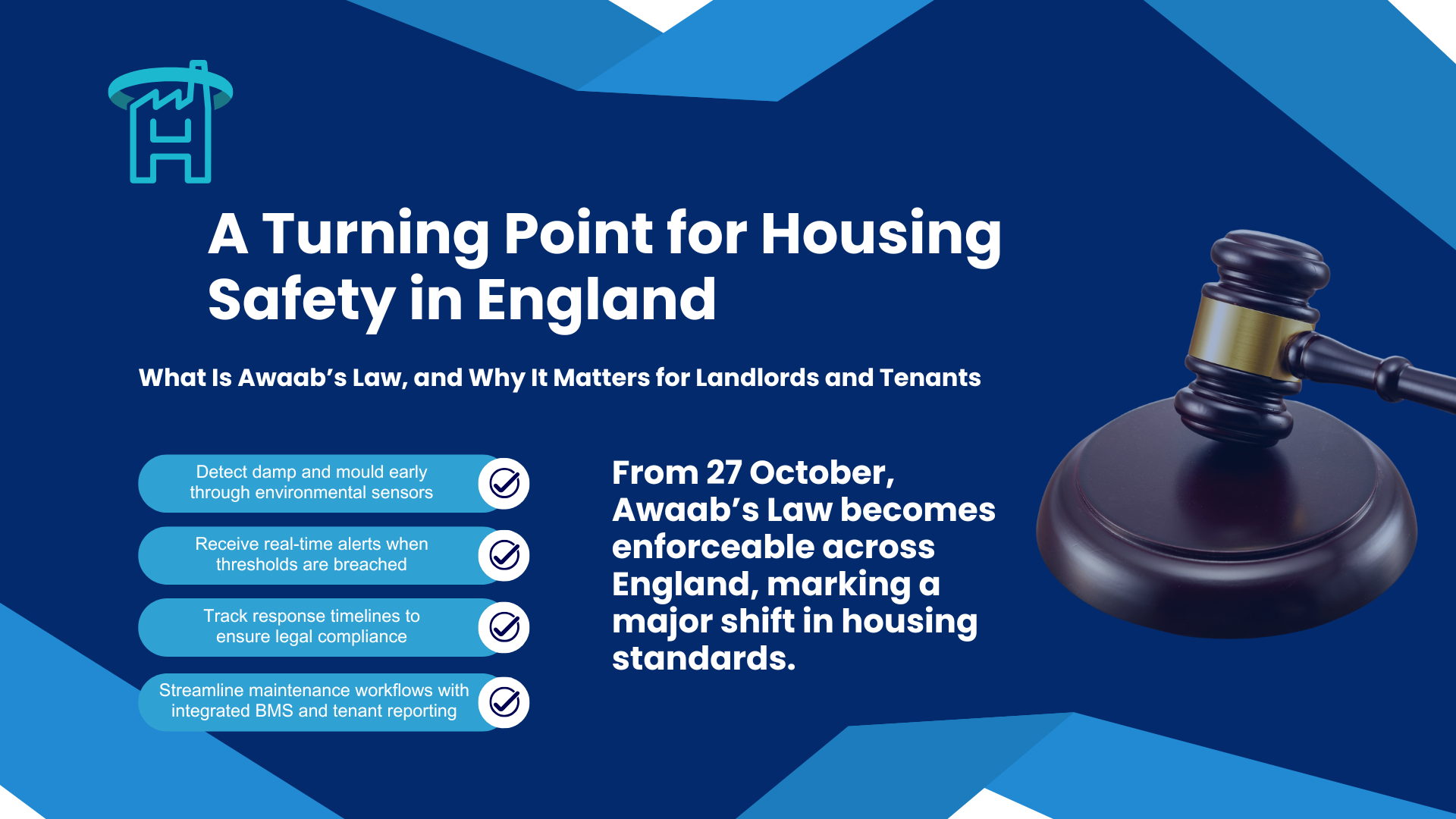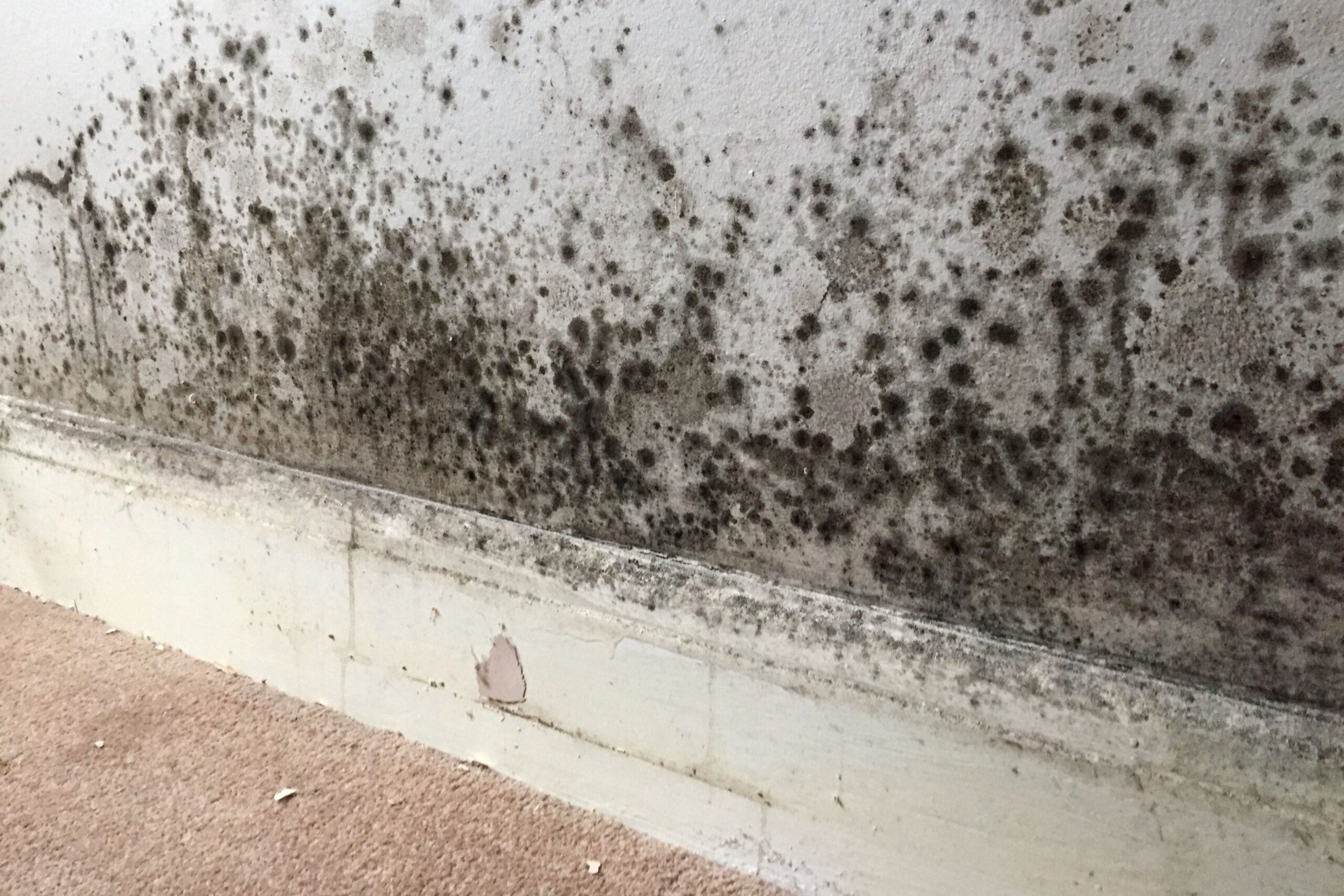Let’s just say we love receiving Halo Smart app user’s feedback. And we don’t just listen, we act. That’s why we’re excited to introduce a major update to the Halo Smart app – a major step forward in IoT usability, transforming how users interact with alerts, notifications, and site navigation. Managing connected devices should be simple, intuitive and reliable. This release is designed to give you greater clarity, faster response times, and a more streamlined experience across all your smart environments. Whether you’re overseeing a single site or managing a global portfolio, the new features make IoT management easier than ever before. Notifications and alerts: Clarity you can trust Managing alerts should never feel overwhelming. That’s why we’ve introduced: These improvements mean you can trust your alerts and act on them with confidence. Smarter site and device navigation Managing multiple sites can be complex. Our new navigation tools make it effortless: These exciting new features give you a bird’s-eye view of your operations, while still allowing you to drill down into the details, if and when needed. Why this matters Our new app improvements are focused on empowering users, as part of our mission to make IoT usability simpler, smarter, and more intuitive across every smart environment. Take the app for a test drive Update your Halo Smart app to explore these new features and experience the difference for yourself. With smarter alerts and navigation, managing your connected world has never been easier. Try the new Halo Smart features today and experience how Halo makes IoT usability and management more intuitive than ever. Or if you’re ready to start your Halo Smart journey to safer and smarter housing, get in touch today! 📞 01942 732819 📩 sales@halosmartiot.com
Awaab’s Law 2025: A Turning Point for Housing Safety in England
What Is Awaab’s Law, and Why It Matters for Landlords and Tenants From 27 October 2025, Awaab’s Law comes into force across England, reshaping how landlords respond to health hazards in rented homes. Named after Awaab Ishak, a two-year-old who tragically died due to untreated mould in social housing, this legislation introduces strict timeframes for addressing issues like damp, mould, and other safety concerns. What Does Awaab’s Law Require? Why it Matters for Landlords and Tenants Where Smart Technology Comes In At Halo Smart IoT, we believe compliance shouldn’t be reactive, it should be automated, intelligent, and preventative. At Halo Smart IoT, we believe technology should empower safer, healthier homes. Smart building systems can play a vital role in early detection, automated alerts, and proactive maintenance, helping landlords stay compliant and tenants stay safe. If you’re a landlord, housing association, or property manager, now is the time to upgrade your compliance strategy. Let’s make homes safer, together. Choose smart. Choose safe. Choose Halo.
Meet Awaab’s Law: Ensuring compliance, protecting tenants and proving action
The introduction of Awaab’s Law marks a pivotal moment in UK housing regulation. Named in memory of Awaab Ishak – a two-year-old boy who tragically died due to prolonged exposure to mould in his home – the law enforces strict new rules for social landlords to tackle damp and mould swiftly and effectively. With Halo Smart IoT, landlords can stay ahead of these new legal duties by proactively monitoring housing conditions, documenting compliance, and identifying risks before they escalate. What does Awaab’s Law mean Awaab’s Law will legally require social landlords in England to: Failure to meet these timeframes can result in severe penalties, regulatory scrutiny, and, most importantly, continued risk to tenant health and safety. Is damp and mould legislation coming in 2025 Yes. While elements of damp and mould regulations already exist under the Housing Health and Safety Rating System (HHSRS), Awaab’s Law introduces enforceable time limits and formal duties that will apply from 2025 onward, with full implementation expected by 2026. This makes 2025 a critical year for housing providers to get ahead of compliance and avoid being caught unprepared. How to prepare for Awaab’s Law Landlords should take the following steps now: Halo Smart IoT provides all of this in a single, integrated solution – offering automatic alerts, timestamped action logs, and discreet, non-invasive sensors that safeguard tenant wellbeing without disrupting their daily lives. What is Awaab’s Law 2026 By 2026, the final enforcement framework of Awaab’s Law will be in place. This means: Halo Smart IoT gives landlords confidence in their compliance by providing clear, irrefutable proof of: Proof of compliance, without the paper chase Halo’s platform automates the process of recording and reporting compliance actions: This allows landlords to meet legal duties quickly, efficiently, and transparently—while also supporting funding applications and audits. Identify vulnerable tenants, prevent risk More than just a compliance tool, Halo helps protect the most at-risk tenants. Persistent cold, humidity, or environmental inactivity may indicate fuel poverty, unsafe conditions, or neglect. Our system flags these risks in real time, allowing housing teams to coordinate the right response—whether that’s maintenance, welfare checks, or energy advice. Why housing providers trust Halo Smart IoT Reframe compliance as care Awaab’s Law isn’t just about penalties – it’s about ensuring that tragedies like Awaab’s never happen again. With Halo Smart IoT, housing providers can meet their legal duties while also prioritising tenant wellbeing and fostering a culture of responsibility, care, and trust. Be ready for Awaab’s Law. Be better for your tenants.
Halo Smart IoT at Housing Show 2025 – Join Us at Stand B23!
We’re excited to announce that Halo Smart IoT will be exhibiting at Housing Show 2025, the UK’s leading event for the housing sector. Taking place from 25–26 June at Manchester Central, the show brings together housing associations, local authorities, and innovative suppliers to shape the future of social housing. Visit us at Stand B23 to discover how our latest technologies are helping landlords and housing providers create safer, healthier homes. From real-time EPC validation with the ThermaFlow Sensor, to tenant wellbeing insights via our App, and portfolio-wide risk visibility through our Landlord Reporting Platform — Halo is transforming how housing providers manage compliance, retrofits, and resident environments. 👉 Want a free ticket to the show?Let us know, and we’ll be happy to arrange one for you. We look forward to seeing you there!
Finding Meaning in Data: How AI and Analytics Can Transform Social Housing
Data analytics is emerging as a powerful tool to enhance tenant well-being and optimise property management. A recent discussion with a key decision-maker in the sector shed light on how data-driven insights can help predict and mitigate housing issues, such as damp and energy inefficiencies, while also addressing the need for proactive system maintenance. The Challenges: Understanding the Market One of the initial challenges discussed was the use of radon sensors in social housing. Despite the potential benefits, councils in Wales have stated that they will not accept data from digital devices, preferring more traditional mechanical methods. This highlights an ongoing issue in the industry: the slow adoption of digital solutions in certain regions due to regulatory restrictions. The Real Opportunity: Data Analytics in Housing A key takeaway from the discussion was the potential to use existing property data to drive meaningful change. By leveraging analytics, we can better understand tenant behaviours, property conditions, and environmental factors. By overlaying property data with additional contextual information—such as whether tenants receive benefits, are elderly, or live in single-occupancy homes—we can begin to identify patterns and trends. For instance, are certain types of tenants more prone to experiencing damp issues? Are there correlations between energy inefficiencies and specific demographics? By answering these questions, housing providers can make more informed decisions that improve living conditions and resource allocation. The Power of AI and Customer-Led Innovation The prospect of integrating AI to extract deeper insights is becoming increasingly tangible. This aligns with broader industry trends where organisations are shifting towards smart, data-led decision-making. If we can successfully implement AI analytics with a real housing association, the initiative would not only offer valuable insights for property management but also serve as a powerful case study to be shared with Welsh government authorities. This kind of thought leadership positions us at the forefront of innovation within the sector. The Future: Building a More Proactive Ecosystem The conversation underscored the importance of bridging the gap between technology deployment and ongoing customer support. It’s not enough to simply install monitoring solutions—we need to ensure they are maintained, understood, and used effectively by housing providers. This means establishing clearer naming conventions, simplifying configurations, and educating customers on system management. Moreover, our analytics platform must strike a balance between real-time alerts and long-term data trends to provide both immediate and strategic insights. Conclusion: A Data-Driven Path Forward As we move forward, our focus is on turning data into actionable insights—helping housing providers create healthier, more efficient living environments while strengthening our position in the market. The journey has just begun, but the possibilities are vast, and the potential impact is transformative.
Overcoming the Initial Investment Hurdle in Analytics Platform Integration for Residential Property Portfolios
Integrating an analytics platform into your residential property portfolio can seem like a daunting task due to the initial investment required. However, with the right strategies, this investment can deliver long-term benefits, from improved operational efficiency to better decision-making. Here’s how residential property managers can overcome the initial hurdles and unlock the full potential of data-driven property management. 1. Start with a Phased Approach Rather than making a large-scale change all at once, take a phased approach to integrating your analytics platform. This approach reduces risk, allows you to gradually adjust processes, and helps you test out different features and tools before committing fully. Begin with a pilot project to measure the platform’s impact in a controlled environment. This provides valuable insights and helps ensure the platform’s compatibility with your existing systems. A phased approach allows you to allocate resources more effectively, making it easier to manage costs and avoid overwhelming your team with major changes. 2. Focus on High-Impact Areas First When rolling out an analytics platform, it’s crucial to prioritise integrations that will have the most significant impact on your portfolio’s performance. Start by focusing on areas that directly affect your bottom line. For instance: By addressing these key areas first, you ensure that the integration of the analytics platform delivers tangible benefits right from the outset, which helps justify the initial investment. 3. Consider the ROI Potential While the upfront cost of implementing an analytics platform may seem high, the long-term return on investment (ROI) can far outweigh the initial expenditure. The power of data-driven decision-making lies in its ability to deliver insights that can improve your bottom line over time. Here’s how: The ROI of analytics platforms is realised over time, but the results can be substantial. Enhanced decision-making and operational efficiency, coupled with more accurate forecasting, can lead to better revenue generation and cost savings. 4. Leverage the Expertise of Analytics Providers Another way to mitigate the initial investment challenge is to partner with analytics providers who specialise in the real estate sector. These providers often offer tailored solutions and can help with the integration process. Their expertise ensures that the analytics platform is configured to meet the specific needs of residential property portfolios, reducing the time and effort required to fully implement the system. Additionally, many providers offer scalable solutions, allowing you to start small and expand the platform’s capabilities as your needs evolve. This flexibility can help balance your investment over time. Conclusion Integrating an analytics platform into your residential property portfolio doesn’t need to be a daunting task. By adopting a phased approach, focusing on high-impact areas, and considering the long-term ROI, property managers can overcome the initial investment hurdles. The result? A more efficient, data-driven management process that drives better decision-making, optimises resources, and improves profitability. Over time, the investment in an analytics platform can lead to enhanced operational efficiencies, improved revenue generation, and a more successful property portfolio overall. By embracing these strategies, residential property portfolio managers can navigate the initial investment concerns and start realising the powerful benefits of data-driven property management.
How IoT is Transforming Housing Management
The Internet of Things (IoT) has revolutionised various industries, and the housing sector is no exception. With the growing adoption of smart technology, property managers, landlords, and housing associations are leveraging IoT solutions to streamline operations, enhance efficiency, and create healthier, safer living environments for residents. The Evolution of Housing Management with IoT Traditional housing management has long relied on manual processes, routine inspections, and reactive maintenance. However, these approaches are often inefficient, costly, and time-consuming. IoT is changing the game by enabling real-time monitoring, predictive maintenance, and automated compliance reporting. Key Benefits of IoT in Housing Management 1. Real-Time Monitoring for Proactive Maintenance IoT-enabled sensors can track key environmental factors such as temperature, humidity, air quality, and energy consumption in real-time. This data allows property managers to identify potential issues before they escalate, reducing the likelihood of costly repairs and emergency callouts. 2. Improved Energy Efficiency Smart building systems can optimise energy use by automating heating, lighting, and ventilation based on occupancy and environmental conditions. By reducing energy wastage, housing providers can lower costs and meet sustainability targets, contributing to a greener future. 3. Enhanced Compliance and Reporting Regulatory compliance is a significant challenge for housing providers. IoT solutions simplify compliance by automatically tracking key metrics, generating reports, and sending alerts when thresholds are exceeded. This ensures adherence to safety and environmental regulations with minimal manual effort. 4. Healthier Living Environments Poor indoor air quality and damp conditions can lead to serious health issues, particularly for vulnerable residents. IoT sensors continuously monitor air quality and humidity levels, alerting housing providers to potential problems such as mould growth before they become hazardous. The Future of Smart Housing The adoption of IoT in housing management is expected to grow as technology advances and regulations tighten. Future developments may include AI-driven automation, blockchain for secure data management, and deeper integration with smart city initiatives. Housing providers that embrace IoT now will be better positioned to improve operational efficiency, enhance tenant satisfaction, and stay ahead of regulatory changes. The future of housing management is smart, connected, and data-driven.
Utility Monitoring for Optimised Resource Management with Halo Smart IoT
Efficient resource management is more critical than ever for property managers overseeing large portfolios. Rising energy costs, sustainability goals, and regulatory pressures demand smarter solutions for tracking and managing utilities. Enter the Halo Smart IoT Utility Monitoring Solution a comprehensive tool designed to provide real-time insights into energy usage, helping property managers reduce waste, lower utility costs, and make data-driven decisions. The Challenges of Utility Management Managing utilities across multiple properties can be a complex and resource-intensive task. Common challenges include: These challenges demand a proactive approach to utility monitoring, one that leverages smart technology for better outcomes. Halo Smart IoT Utility Monitoring: The Solution The Halo Smart IoT Utility Monitoring Solution is a state-of-the-art system that empowers property managers to monitor and manage utilities effectively. By providing granular, real-time data, the system helps identify inefficiencies, optimise energy usage, and achieve sustainability goals. Key Features Benefits of Utility Monitoring with Halo Smart IoT 1. Cost Reduction By identifying inefficiencies in real-time, the system helps eliminate unnecessary energy use, resulting in lower utility bills across your portfolio. 2. Improved Resource Allocation Real-time data provides visibility into resource consumption, enabling better allocation of budgets and resources. 3. Sustainability Goals Utility monitoring supports sustainability initiatives by minimising waste and reducing carbon footprints. 4. Enhanced Operational Efficiency With a clear understanding of utility patterns, property managers can streamline operations and reduce downtime. 5. Tenant Satisfaction Efficient resource management leads to better-maintained properties, which directly improves tenant satisfaction and retention. Real-World Impact Case Study: Managing Energy Across a Large Portfolio Challenge: A property management company overseeing 25 buildings struggled with high utility costs and inconsistent resource tracking. Solution: They implemented the Halo Smart IoT Utility Monitoring Solution to gain real-time visibility into energy usage across all properties. Results: This demonstrates the tangible value of adopting smart utility monitoring for large-scale property management. Getting Started with Halo Smart IoT Implementing the Utility Monitoring Solution is straightforward, with quick installation and minimal disruption to existing operations. Here’s how it works: A Smarter Way to Manage Utilities The Halo Smart IoT Utility Monitoring Solution is more than a tool—it’s a strategy for smarter, more sustainable property management. By delivering real-time data, actionable insights, and proactive solutions, Halo empowers property managers to optimise resources, reduce costs, and enhance tenant satisfaction. Whether you manage a single property or a vast portfolio, Halo is the partner you need to transform utility monitoring and take control of your energy future. Ready to optimise your resource management? Contact us today to learn how Halo Smart IoT can revolutionise your utility monitoring process.
Halo Smart IoT Mould Detection: Your Solution for Healthier, Safer Living Spaces
Mould isn’t just a nuisance—it’s a serious health risk and a hidden danger that can lead to costly property damage if left unchecked. For property managers, keeping indoor environments safe and mould-free can be a challenging task. That’s where the Halo Smart IoT Mould Detection Bundle comes into play, offering a revolutionary approach to mould prevention through early detection, smart data, and real-time alerts. Why Mould Detection Matters in Residential Properties Mould can grow in hidden areas like walls, attics, or bathrooms, where humidity levels are high, often going unnoticed until it becomes a severe problem. It’s not just unsightly; it also releases allergens and irritants that pose health risks to residents, particularly those with respiratory issues or compromised immune systems. Beyond health concerns, untreated mould can weaken structures, causing property damage that’s both expensive and time-consuming to fix. For property managers, detecting and mitigating mould proactively isn’t just an option—it’s a necessity. Traditional approaches to mould management can be costly and reactive, often focusing on remediation rather than prevention. This is where Halo Smart IoT makes a game-changing difference. How the Halo Smart IoT Mould Detection Bundle Works The Halo Smart IoT Mould Detection Bundle leverages advanced IoT technology to keep an eye on environmental conditions across residential buildings. Through a network of smart sensors, the system continuously monitors critical factors like humidity and temperature that contribute to mould growth. Here’s how it works: Key Benefits of Halo’s Mould Detection Solution 1. Proactive Health Protection: Early detection means residents are exposed to fewer health risks. By keeping humidity and temperature in check and preventing mould before it starts, property managers create a healthier indoor environment, reducing allergy and asthma triggers and boosting overall resident satisfaction. 2. Cost Savings on Repairs and Maintenance: Catching mould risks early saves on significant repair costs down the road. Preventing mould growth also helps maintain the property’s structural integrity, protecting its value and reducing long-term maintenance expenses. 3. Simplified Compliance Reporting: For property managers, proving compliance with health and safety standards is simplified with Halo’s data tracking and reporting capabilities. Easy-to-generate reports offer valuable documentation for audits and inspections. 4. Centralised Platform for Property Management: Halo’s intuitive platform allows managers to monitor conditions across multiple buildings, all from a single dashboard. Whether managing one property or an entire portfolio, you can make decisions backed by real-time data. 5. Scalable and Secure Solution: Halo is designed to grow with your needs, allowing you to add more sensors and integrate them across larger property networks. With secure data handling, the platform ensures compliance with data privacy standards. Going Beyond Detection with Actionable Insights Unlike traditional mould detection tools that may only notify you after mould has already formed, Halo Smart IoT takes a proactive approach. The platform’s insights go beyond alerts, offering practical, data-driven guidance to help you take preventative actions. This data becomes a valuable asset, enabling managers to adjust environmental controls, such as HVAC systems, to reduce moisture levels proactively. Healthier Homes, Peace of Mind The Halo Smart IoT Mould Detection Bundle equips property managers with the tools to stay ahead of potential mould issues, providing peace of mind for residents and reducing long-term costs for building owners. Investing in early mould detection and prevention is not only a smart choice for property value and maintenance budgets but also an essential step in creating healthier, happier living spaces. In residential property management, staying proactive is the key to long-term success. With Halo’s advanced IoT technology, you can ensure that each property remains a safe, comfortable, and desirable place to live. Ready to bring Halo Smart IoT Mould Detection into your properties? Contact us today to learn how our solution can keep your buildings mould-free, healthy, and sustainable for years to come.
Large Residential Portfolios Management with Smart Metering Systems
As the demand for more efficient and sustainable property management increases, large residential portfolios adopt innovative technologies to streamline operations and enhance tenant satisfaction. Halo Smart IoT, with its advanced smart metering systems, is transforming how property managers monitor and control utility usage across their estates. This IoT solution is proving to be a game-changer in achieving energy efficiency, reducing costs, and improving overall property management. The Need for Smart Metering in Large Residential Portfolios Managing utilities across multiple properties can be a complex and expensive task for property managers. Traditional methods of utility management often involve manual meter readings, delayed usage data, and reactive maintenance, all of which contribute to inefficiency and increased costs. This is where smart metering systems, integrated with IoT technology, come into play. Smart metering provides real-time data on energy, water, and gas consumption, enabling property managers to monitor utility usage at both the individual unit and portfolio-wide levels. With the Halo Smart IoT platform, property managers gain immediate insights into how resources are being used, allowing them to identify inefficiencies and take proactive measures to optimise energy use and reduce waste. Key Features of Halo Smart IoT for Smart Metering The Benefits of Smart Metering for Residential Portfolio Management Case Study: Success in Large Residential Portfolio Management A large residential property management company recently implemented Halo Smart IoT’s smart metering system across its portfolio of over 1,000 units. Before adopting the platform, the company faced challenges with utility management, including high energy costs, inaccurate billing, and slow response times for maintenance issues. After integrating Halo Smart IoT, the company saw immediate benefits. Real-time monitoring allowed them to identify areas of excessive energy use, particularly in common areas and unoccupied units. By adjusting HVAC settings and automating lighting systems, the company reduced energy consumption by 20% within the first six months, resulting in substantial cost savings. In addition, the platform’s proactive maintenance alerts helped the company address potential water leaks and equipment failures before they impacted tenants, reducing repair costs and improving tenant satisfaction. The smart metering system also streamlined the billing process, ensuring tenants received accurate utility bills based on actual use, improving transparency and reducing billing disputes. As large residential portfolios continue to grow and evolve, the need for efficient utility management becomes increasingly critical. Halo Smart IoT’s smart metering systems offer a powerful solution for property managers looking to optimise energy use, reduce costs, and improve tenant satisfaction. By providing real-time data, automating key processes, and delivering actionable insights, Halo Smart IoT is transforming residential portfolio management, paving the way for more sustainable and efficient property operations.










